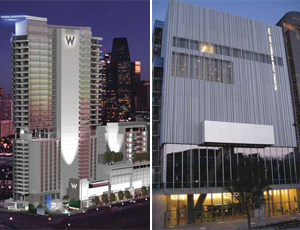...LEED silver. University and research facilities have been some of the earlier innovators in the move toward sustainable building. Corporate projects like the image. Manufacturing has been very slow. Without tax or utility incentives they are not going to do it unless they are forced. Manufacturing is very bottom line oriented.

Florence Block (NJ): There are 1,300 registered LEED projects in New Jersey and we have close to 60 certified projects so we are growing incredibly quickly.
We have had some great accomplishments this year. We were just awarded a grant from the State Department of Labor to provide LEED training to 1,500 incumbent workers in New Jersey. There is recognition that there is a need to retool the workforce in order to meet the growing demand and requirements for green building and LEED.
We have had numerous meetings with the [Department of Environmental Protection], the [Department of Community Affairs] and with the public utilities to work with them on incentives.

The committee I am on with the Rutgers Center for Green Building, DEP, DCA and Home Builders Association just approved the statement of a green building standard for the state for the next two years. Residential and commercial buildings, both new and existing, need to be LEED silver minimum with specified energy minimums, which are actually higher than the New Jersey Master Plan.
We are overwhelmed with requests and we are growing. Our workshops are selling out.
NYC: Why aren’t we seeing more people buying into sustainable building and LEED? What are the current obstacles or misconceptions?
RU: I think in the high end market it is standard and I do not think there are any obstacles there. When you get outside of that market I think costs and expertise remain the obstacles. The expertise, the knowledge, is still not there across the industry.
There are also some costs associated with it and it is harder to absorb those costs if you have a smaller budget. Of course all those costs are going down.
Finally, I do not think the demand is as robust in these other market segments as it is in the high end residential and office markets.
TR: I think there is an education process to understand the benefits and I think there is a perception that it is more expensive. Owners are not prepared for the integration that is required in design and construction early on. They are not willing to make those early commitments and spend that extra money for simulations. Some of it could also be the old school stereotype. You are not interested in a more innovative approach that is involving your A&E team with your construction firm early on in the process.
FB: I believe that it is really the lack of understanding of sustainability practices. I also think the perception is that it is very expensive and the payback is very slow.
Everyone talks about green but I think that it is overwhelming for a business or a real estate developer without the background and understanding to determine what is green. If you have a good understanding and awareness of...


Post a comment to this article
Report Abusive Comment